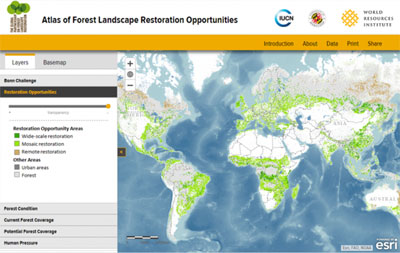by Rona Fried
While rapidly scaling renewable energy can get us half the way toward staying below 2°C global temperature rise, the other half can come from protecting and restoring the world’s rainforests.
Reducing greenhouse gas emissions is an essential piece of the pie, but we must also pull carbon out of the atmosphere – which is what rainforests do. They can do their job if we let them, and at very low cost, says Dr. Paul Salaman, CEO of Rainforest Trust.
"Natural regrowth and subsequent protection of hundreds of millions of acres of degraded rainforest would result in massive absorption of carbon as the trees grow. While it is crucial that we transition away from the use of fossil fuels, the reality is that rainforest protection can happen much more quickly," he says.
It costs just a few dollars to protect an acre of rainforest, which absorbs about 180 metric tons of carbon, he says. He should know – Rainforest Trust has purchased over 11 million acres of tropical habitat in 20 countries.
I proudly purchased almost 2000 acres this year for a new, 1.2 million-acre national park in the Congo, providing vital habitat for bonobos, forest elephants and many more species.
"Although wholesale clear-cutting and selective logging have destroyed massive areas of rainforest, vast areas remain intact. And degraded rainforest, if allowed to regenerate, is amazingly resilient. In 10 years, seedlings can grow into 50-foot trees. Diverse wildlife can return and rebound within two to three years," says Salaman.
It’s time for countries and corporations to stop viewing deforestation as necessary to economic development – the consequences are way too devastating.
"The case for rainforest preservation – already overwhelmingly strong – can no longer be cast as a niche effort of conservationists and scientists; it needs to be everyone’s concern. For those wishing to tackle our planet’s greatest environmental challenge, there is no better place to begin than saving our tropical rainforests," says Salaman.

Last year, we saw commitments to restore hundreds of millions of acres of forest around the world, and the tide is finally turning toward sustainable agriculture – acknowledging the critical role it plays in reversing climate change.
Read A Role for Tropical Forests in Stabilizing Atmospheric CO2.
